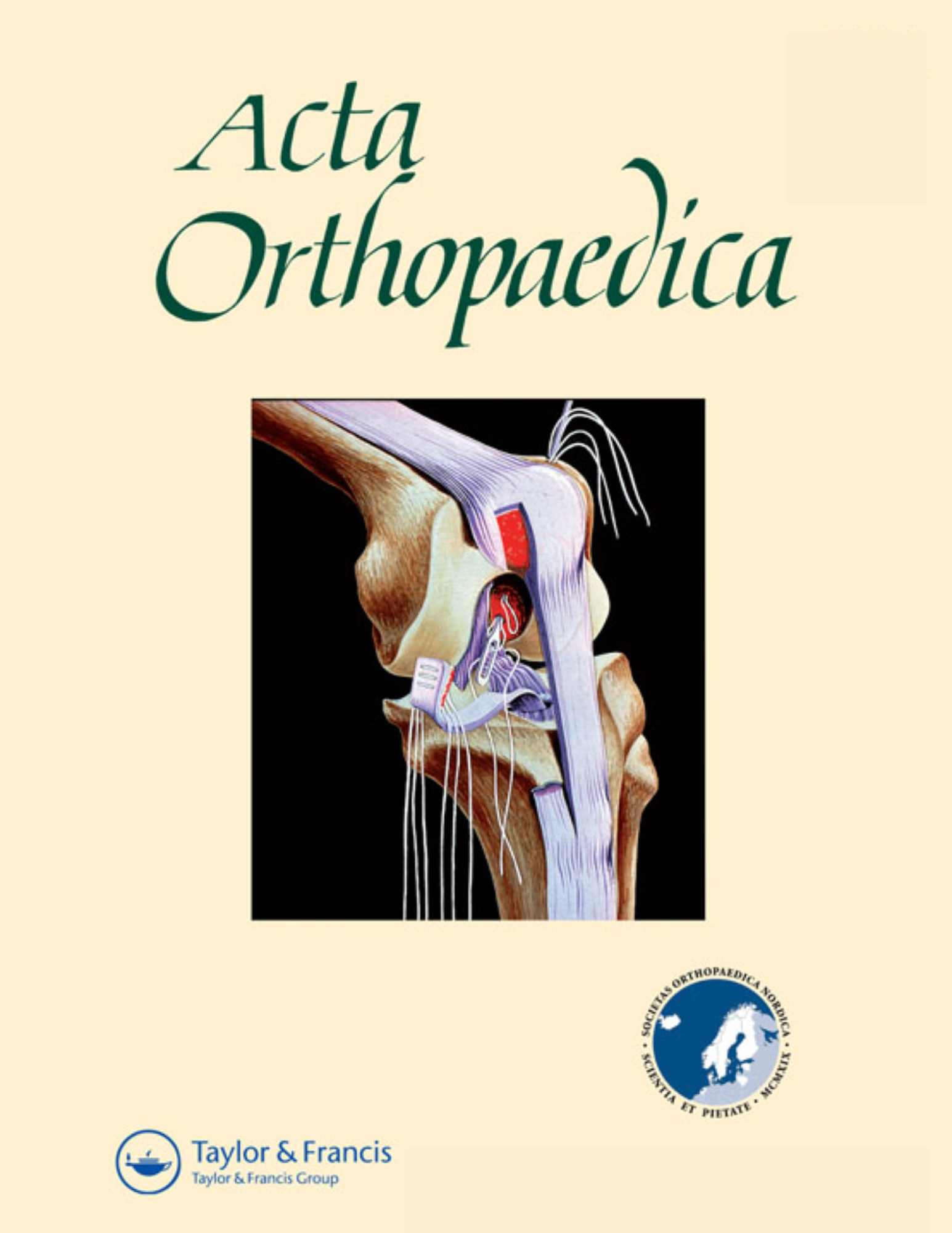
THA: More migration observed with Charnley femoral stem compared to Spectron EF stem

THA: More migration observed with Charnley femoral stem compared to Spectron EF stem
A randomized study on migration of the Spectron EF and the Charnley flanged 40 cemented femoral components using radiostereometric analysis at 2 years
Acta Orthop. 2011 Oct;82(5):538-44. Epub 2011 Sep 6Synopsis
150 patients with primary or secondary osteoarthritis of the hip were randomized to undergo THA with either a Charnley or Spectron EF femoral stem. The 2 year results indicate that the Spectron EF stem has superior stability when compared to the Charnley stem, which demonstrated significantly more stem retroversion and posterior translation. Future studies are required to determine if similar results are found over longer follow-up periods.
Was the allocation sequence adequately generated?
Was allocation adequately concealed?
Blinding Treatment Providers: Was knowledge of the allocated interventions adequately prevented?
Blinding Outcome Assessors: Was knowledge of the allocated interventions adequately prevented?
Blinding Patients: Was knowledge of the allocated interventions adequately prevented?
Was loss to follow-up (missing outcome data) infrequent?
Are reports of the study free of suggestion of selective outcome reporting?
Were outcomes objective, patient-important and assessed in a manner to limit bias (ie. duplicate assessors, Independent assessors)?
Was the sample size sufficiently large to assure a balance of prognosis and sufficiently large number of outcome events?
Was investigator expertise/experience with both treatment and control techniques likely the same (ie.were criteria for surgeon participation/expertise provided)?
Yes = 1
Uncertain = 0.5
Not Relevant = 0
No = 0
The Reporting Criteria Assessment evaluates the transparency with which authors report the methodological and trial characteristics of the trial within the publication. The assessment is divided into five categories which are presented below.
3/4
Randomization
2/4
Outcome Measurements
2/4
Inclusion / Exclusion
4/4
Therapy Description
4/4
Statistics
Detsky AS, Naylor CD, O'Rourke K, McGeer AJ, L'Abbé KA. J Clin Epidemiol. 1992;45:255-65
The Fragility Index is a tool that aids in the interpretation of significant findings, providing a measure of strength for a result. The Fragility Index represents the number of consecutive events that need to be added to a dichotomous outcome to make the finding no longer significant. A small number represents a weaker finding and a large number represents a stronger finding.
Why was this study needed now?
There are many possible mechanisms that can cause femoral stem loosening in cemented total hip replacements including the material, design, and surface finish. Debonding between the cement and femoral stem initiates this loosening, and to address this issue there are many different femoral stem designs aimed at increasing fixation and preventing loosening. The Spectron femoral stem is increasingly being used and has resulted in successful outcomes; however, there is a lack of comparisons to other femoral stems.
What was the principal research question?
What effect does the use of a Charnley or Spectron EF femoral stem have on migration in patients with hip osteoarthritis undergoing cemented total hip replacement, measured over 2 year follow-up period?
What were the important findings?
- At 2 years, stem retroversion (mean internal rotation) was 2.3 and 0.7 degrees (p<0.001), and posterior translation (negative translation along z-axis) was 0.44mm and 0.17mm (p=0.002) for the patients in the Charnley group and Spectron EF groups respectively.
- At 2 years, subsidence (migration along y-axis) was 0.26mm for Charnley group, compared to 0.20mm for Spectron EF group (p=0.5).
What should I remember most?
Results from the two year follow-up found that the Charnley stem had more significantly more stem retroversion and posterior translation, compared to the Spectron EF stem.
How will this affect the care of my patients?
Although the Spectron EF stem proved to be more stable throughout the 2 year duration of this study, these good short-term results do not necessarily translate into successful long-term outcomes. Therefore, studies with longer-term follow up periods, which evaluate the impact of design, materials and surface finish of the implant on loosening and resulting migration, are required.
Learn about our AI Driven
High Impact Search Feature
Our AI driven High Impact metric calculates the impact an article will have by considering both the publishing journal and the content of the article itself. Built using the latest advances in natural language processing, OE High Impact predicts an article’s future number of citations better than impact factor alone.
Continue



 LOGIN
LOGIN

Join the Conversation
Please Login or Join to leave comments.